| |
|
|
|
|
|
|
|
|
|
|
| |
| |
 |
|
| |
田润德
编译
文/图 2020-05-04 19:36 |
|
| |
|
|
|
|
| |
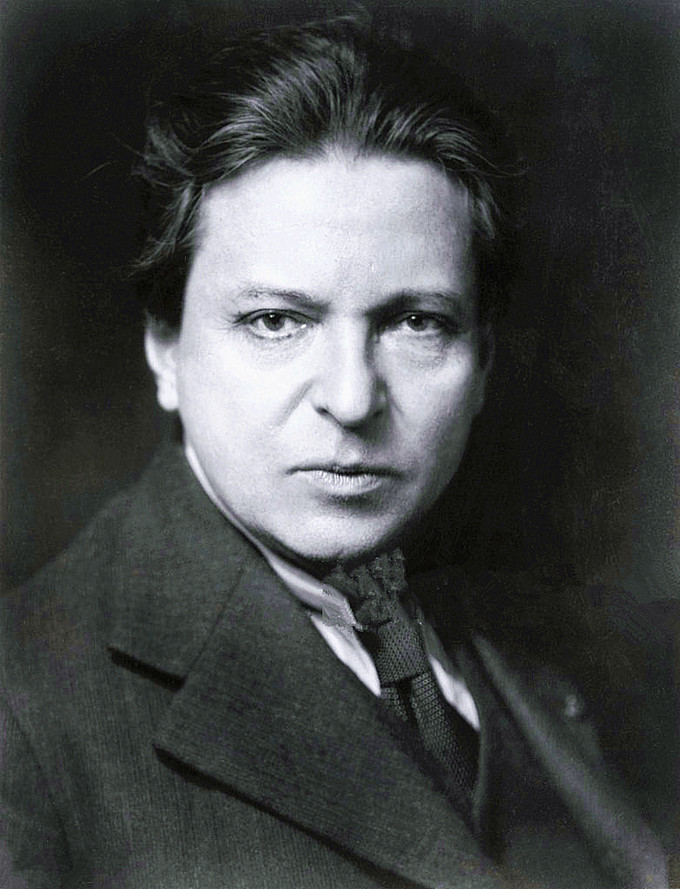 |
|
|
|
| |
乔治·埃内斯库(George Enescu,
1881-1955) |
|
|
|
| |
|
|
|
|
| |
乔治·埃内斯库 罗马尼亚第一狂想曲 柏林爱乐乐团演奏 指挥 杨松思
|
|
|
|
| |
George Enescu - Romanian Rhapsody No. 1
|
|
|
|
| |
|
|
|
|
| |
音乐历史上的今天
1955年5月4日,乔治·埃内斯库卒于巴黎。
罗马尼亚的乔治·埃内斯库乔治·埃内斯库(George Enescu, 1881-1955)这样写道:“我诞生在一块具有传奇色彩的土地上,我是大地的儿子。我的一生都是在我童年之神的亲切注视下度过的。”乔治·埃内斯库是十九世纪最伟大的教师之一。
正如梅纽因在他的自传《未完成的旅途》中所指出的,虽然神童的称号使埃奈斯库离乡背井,二十世纪初他已经是一位非常成功的演奏家,一直在到处演奏,但埃内斯库从未和大地失去联系。他在巴黎建立了自己的住所,但是在罗马尼亚的农村他仍然有一所避暑山庄,并且恰当地称它为“明亮的房子”。
埃内斯库生于摩尔多瓦的一个叫多罗霍尤的地方。那里的居民有土耳其、希腊、马扎尔和乌克兰人的血统。七岁时他就进入了维也纳音乐学院,在黑尔梅斯贝格的班级里学习。两年后他就进入成人班,十二岁时获得了小提琴演奏的最高奖,并从该院毕业。当时作曲对年轻的埃内斯库来讲已经是最重要的事情了。十岁时他已经写了他的第一首四声部赋格。
当时是维也纳歌剧院的首席,是他给予埃内斯库学习配器的机会的。当他在维也纳音乐学院学习的时候,他住在老师的家里,每天晚上都由黑尔梅斯贝格偷偷地带领他到歌剧院的乐池中,并躲在定音鼓的后面。在那里他学习到乐队各种色彩的声音,也学习了各种乐器的性能。当他第一次听了瓦格纳的歌剧后,简直是如醉如痴。后来他谈到当时的感受时说:“我不愿意嘹望天空,因为我已经在瓦格纳的音乐里见到了所有的星星。”
后来埃内斯库从维也纳去了巴黎,并进入巴黎音乐学院成为马尔西克的学生学习和声,同时还师从格达尔格和福雷学习作曲。1899年,他再次获得了一等奖。但是他的成功是与众不同的。他并不想成为一位演奏家,他甚至也不想成为一名小提琴家。他更喜欢弹钢琴,而且弹得好极了,他还有更大的抱负想成为一名作曲家。当他还是一名学生的时候,他的第一部作品《罗马尼亚音诗》已经由科洛纳管弦东团在巴黎演出了,这样他从事作曲似乎已经有了一个很好的开端。此外他还会演奏大提琴,并且可以同样流畅地说八种语言。埃内斯库还很年轻时,就决定只通过演奏小提琴赚足够的钱,以便能在罗马尼亚买一块土地。他计划早一点退休,然后一直到死都从事作曲。
我对作曲简直着了迷,所以我不愿意在小提琴上花掉我的任何一点时间,虽然我对自己所写的东西并不抱什么幻想,但是我很想把我一切微小的努力都放在作曲上,而不是不断地只学习一件乐器。在这件乐器上我已经花掉了许多力气,而我得到的只不过是很少的满足。我经常看着琴盒里的小提琴,并对自己说:你太小了,我亲爱的朋友,实在是太小了。
他的观点是孤立的。《纽约时报》的评论员于1
923年1月23日写道:“他是一位真正的音乐家和演奏家,是一位只献身于表达音乐,完全不显示自己技巧的音乐家。他的技巧的确是了不起的,但只是用来作为表达音乐的一种手段……他的演奏以其精确的音准,特别是双音的音准而著称。”人们还称赞他选择演奏巴赫的整首《d小调古组曲》,而不是像许多小提琴家那样只演奏其中的《恰空》,评论员们说他演奏的这首曲子“表达出非常安详的情绪,演奏得十分自如,毫不费力”。
他之所以能演奏得“十分自如,毫不费力”,显然是由于他从小就学习巴赫和热爱巴赫的作品。当埃内斯库在巴黎的时候,夏天就返回罗马尼亚度假,正是在那时,卡门·希尔娃皇后送给他一套巴赫全集。这套全集成了他学习的源泉和一生的享受。许多埃内斯库的学生都说他至少能背出一二十首巴赫的清唱剧。
他经常向他的学生指出,巴赫的作品大部分都是为文字而写的,只有很少一部分是为器乐写的。他建议他们花点时间学习一些巴赫的清唱刷,这样就能感受到和声结构和文字之间的关系。这种音乐和文字在感情上的紧密联系,对埃内斯库来讲是演奏巴赫器乐作品的关键。美国的海伦·道林是埃内斯库的亲密同事,跟随埃内斯库学习过四年,她说:“向埃内斯库学习巴赫是很有启发的。因为逐渐地音乐会开始对你讲话了,而且逐渐地你也找到了如何把这些话告诉你的听众的方式。
埃奈斯库每年夏天都在巴黎举行大师班。他本人很少关心技巧问题,因为他认为这是一般教师们的工作。他力图给他的学生们更新和更深的对音乐的理解。他从来也不坚持让他的学生们按照他的方式去演奏,而是给他们一个总的音乐概念,然后学生就可以从中找到自己的道路。海伦·道林说:“你应当学会在链条中跳舞。”他的意思是说一个人应当学会自如的活动,但是仍然在作曲家制定的框架里活动……他的宇宙就是音乐,他本人则是音乐谦逊的仆人。生活中其他的东西都是不重要的。正是埃内斯库这种对音乐极其专一的精神,使所有来到他运行轨道里的人,都受到他的影响!
弗莱什说埃内斯库“在他的同行中,有如平静的海面上一座高耸入云的岩石”。他说人们无法说明在埃内斯库的多种才能中,到底哪一种是最伟大的:他作为教师、作曲家、指挥家、小提琴家和钢琴家的造诣,似乎都是同样完美。今天埃内斯库的作品似乎已经很少为人们所演奏了。博尔特在谈到他的狂想曲时说:“无论它是多么难于演奏,从音乐的角度来讲,这部作品的确很好地表现出乐队的辉煌技巧。”
埃内斯库少年时代曾与约阿希姆有所接触,显示了他们之间的良好关系。当埃内斯库十五岁的时候,他在柏林演奏给约阿希姆听。这位伟大的教师适当地鼓励了他的才能和演奏。埃内斯库当时只有十几岁,已缢写出了他的《第一奏鸣曲》,他害羞地要求演奏这首奏鸣曲给约阿希姆听。于是埃内斯库就演奏钢琴,由约阿希姆视奏小提琴部分。演奏完之后,这位老人惊讶地说:“真的,这部作品比法朗克的奏鸣曲还要现代化!”
梅纽因在很小的时候也跟埃内斯库学习过,而且直至今日仍然记得跟他学习所得到的巨大好处。他写道:
每次上课对我都是巨大的启发,而不是普通的上课。他是在演奏音乐,
我好像是他的乐队……当他在钢琴上给我弹伴奏时,他嘴里还唱着乐队的各种声部……通过他的实际表现,我从他那里学到的是所有的音符都有了生命,每个乐句都有了形状和含义,音乐的结构也变得十分鲜明。音乐对我来讲再也不只是一些音符了:它有着火热的感情,但是在过去,我从来没有像今天这样清楚生动地感受到它。
今日视频:1、杨松思指挥乔治·埃内斯库《罗马尼亚第一狂想曲》(柏林爱乐乐团演奏);2、乔治·埃内斯库和迪努·利帕蒂演奏埃涅斯库奏鸣曲第3号;3、艾达·亨德尔和米沙·达契奇演奏乔治·埃内斯库的第三奏鸣曲。 |
|
|
|
| |
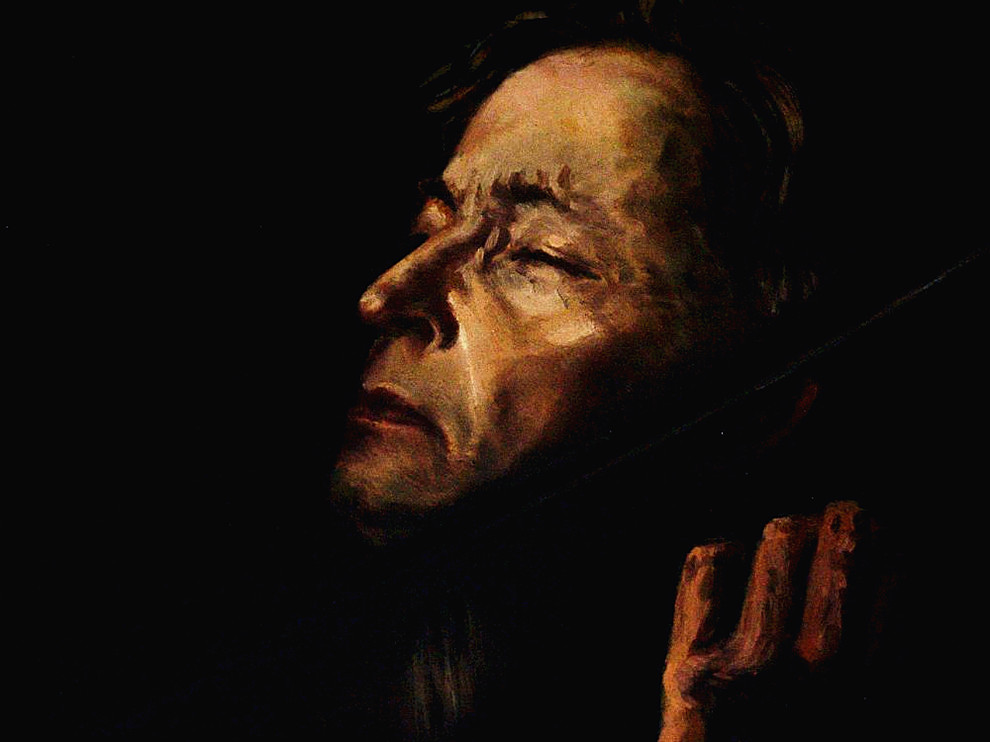 |
|
| |
罗马尼亚作曲家埃内斯库还在三岁的时候,在他的家乡尼亚姆斯特卡听到了一一个吉普赛民间乐队的演奏,特别是其中的小提琴和洋琴立刻使他着了迷。之后,他找来一块木头,装上三根细绳子当作弦,很快做成了一把搁在肩上是“小提琴”,放在桌上用两根小棒敲打起来又变成“洋琴”的乐器兼玩具,只是作为乐器的话,用它不能奏出音乐来。
艾涅斯库到五岁时已学会了识谱。有一天,他听到父母亲在议论城里正在上演一部新歌剧。当时,他还从来没有看过歌剧,但想象中歌剧一定是很有趣的,于是他立刻按照他所看到的乐谱那样创作起“歌剧”来。他很认真地在乐谱上写上:“《罗马尼亚的田野》,为钢琴和小提琴演奏用的歌剧,乔治·艾涅斯库五岁时作。”这部“歌剧”当然实际上完全不可能演出,因为一共只有十二个小节。
但是,父亲从儿子稚气的举动中却看到了音乐才能的火花,后来就把他送到维也纳学习音乐,终于成为举世闻名的大作曲家。 |
|
|
|
| |
When romanian
composer enescu was three years old, he heard a gypsy folk band playing
in his hometown of nyamstka.Then he took a piece of wood, attached three
strings as strings, and soon made a "violin" on his shoulder, which he
struck with two sticks on the table and turned into a "dulcimer".
By the age of five, aenescu had learned to read music.One day he heard
his parents putting on a new opera in the council town.At that time he
had never seen an opera, but it must have been very interesting in his
imagination, and he began at once to compose it according to the music
he had seen.He wrote carefully on the sheet music: "the fields of
Romania, an opera for piano and violin, written by George aenescu at the
age of five."The "opera", of course, was practically impossible to
perform, for there were only twelve bars.
However, the father saw the spark of musical talent in his son's
childish behavior, and later sent him to Vienna to study music, and
eventually became a world-famous composer. |
|
|
|
| |
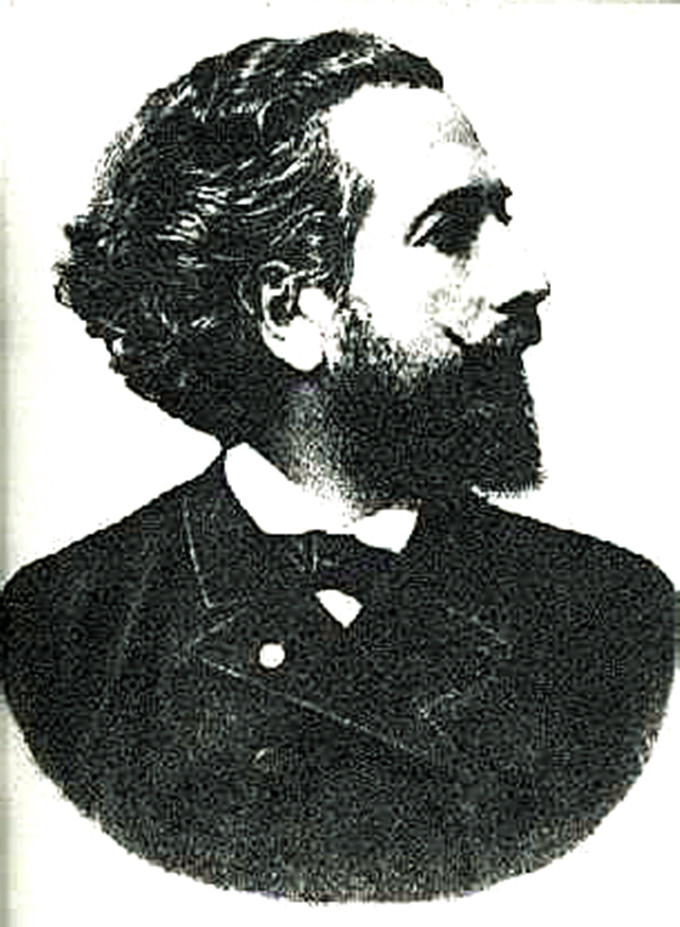 |
|
| |
乔治·埃内斯库的老师黑尔梅斯贝格(helmesberg) |
|
|
|
| |
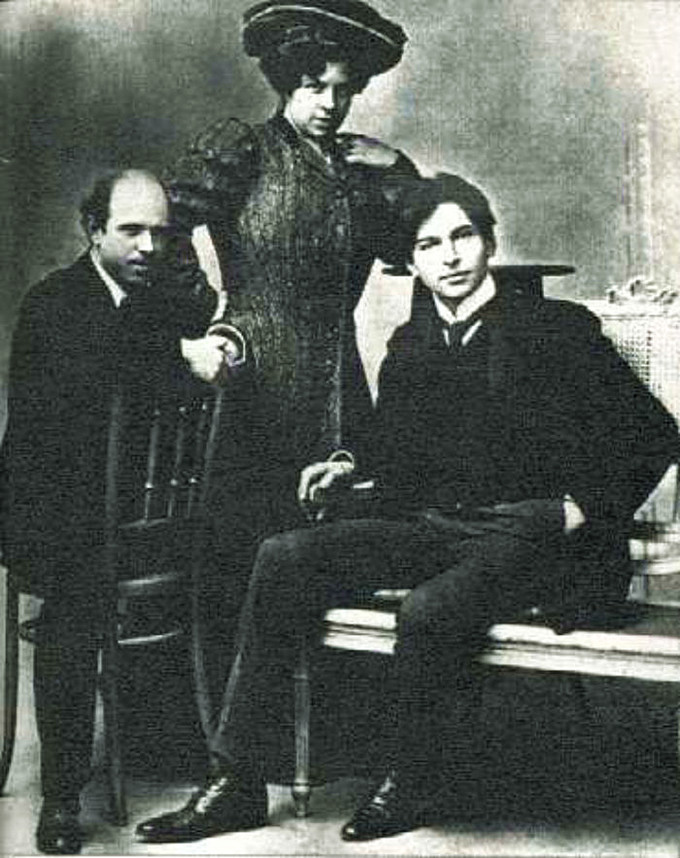 |
|
|
|
| |
埃内斯库和卡萨尔斯
传奇大提琴家巴勃罗·卡萨尔斯(Pablo Casals)将乔治·埃奈斯库(George
Enescu)描述为“自莫扎特(Mozart)以来最伟大的音乐现象”和“现代音乐最伟大的天才之一”。
与巴勃罗·卡萨尔斯和职业歌手玛丽·盖(1904年波尔多) |
|
|
|
| |
Enescu and
Casals
The legendary cellist, Pablo Casals described George Enescu as “the
greatest musical phenomenon since Mozart” and “one of the greatest
geniuses of modern music”.
With Pablo Casals and the professional singer Marie Gai (Bordeaux 1904)
|
|
|
|
| |
|
|
|
|
| |
Today in the
history of music
George enescu died in Paris on May 4, 1955.
George Enescu (1881-1955) of Romania wrote: "I was born in a land of
legend. I am the son of the earth.My life has been spent under the kind
gaze of the god of my childhood."George enescu was one of the greatest
teachers of the nineteenth century.
As menuhin points out in his autobiography the unfinished journey,
although the title of child prodigy drove enescu from his native land,
he was already a very successful performer in the early 20th century,
playing everywhere, but enescu never lost touch with the earth.He
established his residence in Paris, but he still had a summer home in
the romanian countryside, which he aptly called the house of light.
Enescu was born in moldova in a place called dorohoyu.Its inhabitants
are of Turkish, Greek, mazar and Ukrainian descent.At the age of seven
he entered the Vienna conservatory of music, where he studied in
helmesberg's class.Two years later he entered the adult class, won the
highest prize for violin playing at the age of twelve, and graduated
from the college.At that time, composing music was the most important
thing for young enescu.At the age of ten he had written his first
four-part fugue.
He was the head of the Vienna opera, and it was he who gave enescu the
chance to learn orchestration.When he was studying at the Vienna
conservatory of music, he stayed at his teacher's house, and every night
helmesberg would sneak him into the orchestra pit of the opera house and
hide behind the timpani.There he learned the sound of the band in all
its colours and the performance of the instruments.When he heard
Wagner's opera for the first time, he was out of his mind.Later he said
of his feelings: "I do not wish to watch the sky, for I have seen all
the stars in Wagner's music."
Enescu then went from Vienna to Paris, where he attended the Paris
conservatory of music and studied harmony as a student of marcik, as
well as composition with gerdag and frei.He won the first prize again in
1899.But his success was different.He didn't want to be a virtuoso. He
didn't even want to be a violinist.He prefers to play the piano, and he
plays it very well, and he has bigger ambitions to be a composer.When he
was still a student, his first work, romanian poetry, had been performed
in Paris by the colonna orchestra east, and he seemed to have made a
good start in composition.He also plays the cello and can speak eight
languages with equal fluency.When enescu was still very young, he
decided to earn enough money just by playing the violin so that he could
buy a piece of land in Romania.He plans to retire early and continue
composing music until he dies.
I was so crazy about composing that I didn't want to spend any of my
time on the violin. Although I didn't have any illusions about what I
was writing, I wanted to put all my little efforts into composing rather
than just learning one instrument.I have spent a great deal of energy on
this instrument, and I have received little more than satisfaction.I
often look at the violin in the case and say to myself: you are too
small, my dear friend, too small.
His views are isolated.The critic of the New York times wrote on January
23, 1923, "he is a true musician and performer, a musician who is
devoted to the expression of music and shows no skill at all.His
technique is indeed marvelous, but only used as a means of expressing
music...His playing is known for its precise intonation, especially the
two-note intonation."He was also praised for choosing to play Bach's
entire suite of ancient d minor, rather than just one of them, cha kon,
as many violinists do, which critics described as "very serene and
effortless."
His ability to play "very freely and effortlessly" was apparently due to
his childhood learning and love of Bach.When enescu was in Paris, he
returned to Romania for a summer holiday, and it was then that queen
Carmen hilva gave him a complete set of Bach.The collection became a
source of learning and a lifelong enjoyment for him.Many of enescu's
students say he can recite at least ten or twenty of Bach's oratorio.
He often pointed out to his students that Bach's works were mostly
written for words and only a few for instrumental music.He suggested
that they take some time to learn some of Bach's cantabile brushes so
that they could feel the relationship between the harmonic structure and
the words.This close emotional connection between music and words is the
key to Bach's instrumental work for enescu.Helen dowling, an American
close colleague who studied with enescu for four years, said: "it was
very inspiring to learn from him.Gradually the concert begins to speak
to you, and gradually you figure out how to get the message across to
your audience.
Enescu gives master classes in Paris every summer.He himself cared
little for skill, for he thought it was the job of the average
teacher.He tried to give his students a new and deeper understanding of
music.He never insisted on his students playing his way, but gave them a
general musical concept from which they could find their way."You should
learn to dance in the chain," said Helen dowling.What he meant was that
one should learn to move freely, but still move within the frame set by
the composer...His universe is music, and he himself is music's humble
servant.Nothing else in life is important.It was enescu's devotion to
music that influenced all who came into his orbit!
Mr. Flash said Mr. Enescu was "like a towering rock on a calm sea among
his peers."He said it was impossible to say which of enescu's many
talents was the greatest: his accomplishments as a teacher, composer,
conductor, violinist and pianist all seemed equally perfect.Today few of
enescu's works seem to be played.Bolt said of his rhapsody: "no matter
how difficult it is to play, from a musical point of view, it really
shows the brilliance of the band."
Enescu had contact with joachim as a teenager, showing that they had a
good relationship.When enescu was fifteen, he played to joachim in
Berlin.The great teacher duly encouraged his talent and his
playing.Enescu, who was only a teenager at the time, had penned his
sonata no. 1, which he shyly requested to be played for joachim.Enescu
played the piano and joachim played the violin.When he finished, the old
man said in surprise, "really, this work is more modern than the sonata
of franck!"
Menuhin also studied with enescu when he was very young and still
remembers the great benefit of learning from him.He wrote:
Every class is a great inspiration to me, not a regular class.He was
playing music, and I was like his band...When he accompanied me on the
piano, he sang all the parts of the orchestra...Through his actual
performance, what I learned from him was that all the notes came to
life, every phrase had shape and meaning, and the structure of the music
became very distinct.Music to me is no longer just a few notes: it has a
fiery feeling, but in the past, I have never felt it so clearly and
vividly as today.
Today's video: 1. Song Yang conducts the first romanian rhapsody by
George enescu (performed by the Berlin philharmonic);2. George aenescu
and dinu lipati playing the sonata no. 3 of aenescu;3. IDA Handel and
misha dacic play the third sonata by George aenescu. |
|
|
|
| |
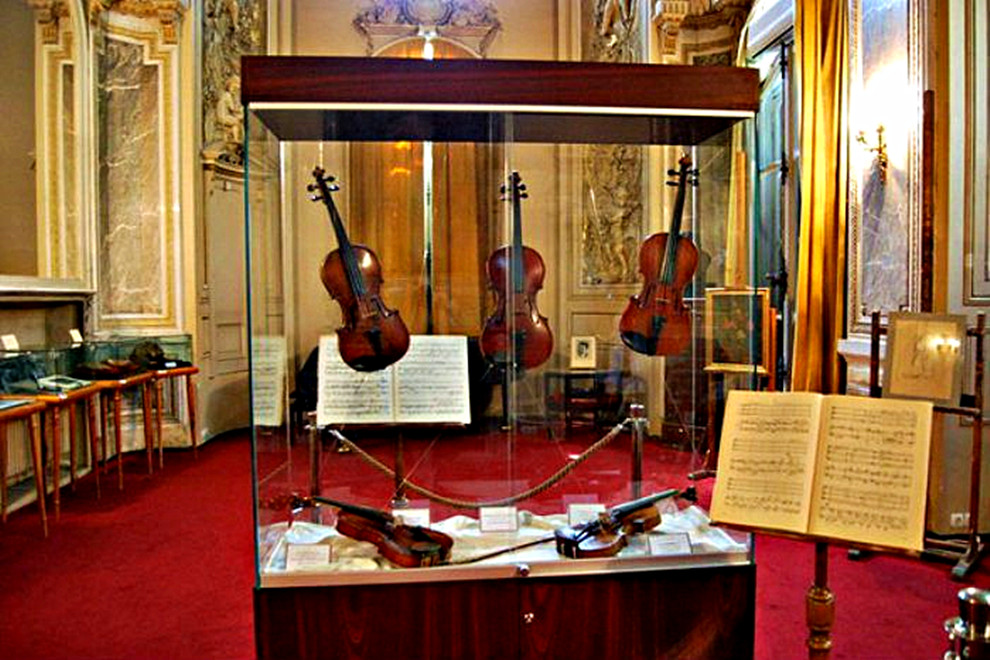 |
|
| |
埃内斯库的著名小提琴
瓜尔尼耶小提琴,又称“大教堂”,于1731年由克里莫纳的朱塞佩·安东尼奥·瓜尔尼耶(GiuseppeTonioGuarnieri)制作,这是一种相当。
2008年,在文化和宗教事务部和国家博物馆“乔治·埃内斯库”组织的一场比赛之后,小提琴被委托给小提琴家加布里埃尔·克罗托鲁。
另外两把小提琴是在二十世纪上半叶由保罗·考尔制作的,特别是乔治·埃内斯库。 小提琴提供了卓越的音质,当然,有一个重要的纪念价值。 |
|
|
|
| |
Enescu’s Famous
Violins
The Guarnieri violin, also called “The Cathedral”, was made in 1731, by
Giuseppe Antonio Guarnieri in Cremona, a violin of extraordinary
quality, comparable only to the instruments made by Stradivarius. In
2008, after a competition organized by the Ministry of Culture and
Religious Affairs and the National Museum “George Enescu”, the violin
has been entrusted to violinist Gabriel Croitoru. The other two violins
were made in the first half of the twentieth century, by Paul Kaul,
especially for George Enescu. The violins provide exceptional sound
quality and, of course, have an important memorial value. |
|
|
|
| |
|
|
|
|
| |
|
|
| |
梅纽因和他的老师埃内斯库 |
|
|
|
| |
梅纽因在很小的时候也跟埃内斯库学习过,而且直至今日仍然记得跟他学习所得到的巨大好处。他写道:
每次上课对我都是巨大的启发,而不是普通的上课。他是在演奏音乐,
我好像是他的乐队……当他在钢琴上给我弹伴奏时,他嘴里还唱着乐队的各种声部……通过他的实际表现,我从他那里学到的是所有的音符都有了生命,每个乐句都有了形状和含义,音乐的结构也变得十分鲜明。音乐对我来讲再也不只是一些音符了:它有着火热的感情,但是在过去,我从来没有像今天这样清楚生动地感受到它。 |
|
|
|
| |
Menuhin also
studied with enescu when he was very young and still remembers the great
benefit of learning from him.He wrote:
Every class is a great inspiration to me, not a regular class.He was
playing music, and I was like his band...When he accompanied me on the
piano, he sang all the parts of the orchestra...Through his actual
performance, what I learned from him was that all the notes came to
life, every phrase had shape and meaning, and the structure of the music
became very distinct.Music to me is no longer just a few notes: it has a
fiery feeling, but in the past, I have never felt it so clearly and
vividly as today. |
|
|
|
| |
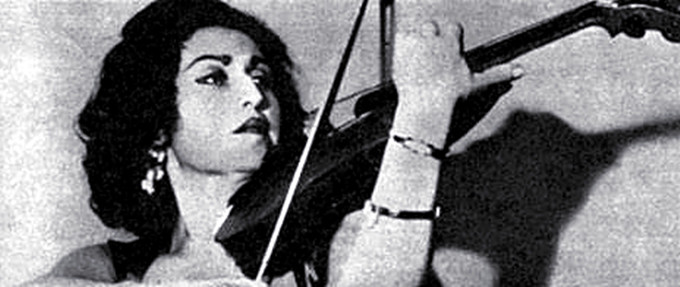 |
|
| |
埃内斯库的学生伊达·哈恩岱尔(IDA
Haendel) 在演奏中。 |
|
|
|
| |
现在人们只记得埃内斯库是位教师。伊达·哈恩岱尔当时年纪很小,但是已经是位演奏家了,在弗菜什一怒之下暂时被拒绝于课堂之外。她一直想师从埃内斯库学习,就由父亲带领来到巴黎埃内斯库处上了几节课。虽然那时哈恩岱尔还很小,但是她知道在她面前的是一位“最令人鼓舞、使人振奋的人物。他那矮小的身材、弯曲的脊骨(以后埃内斯库患了极为严重的残障),以及不考究的服装,
似乎更加强了他的伟大和精神的高尚”。同样又是在学习有关巴赫的作品时,她发现埃内斯库“坚定不移地去掉了巴赫所有的装饰音……从而显示出作品真正的曲式结构”。当去掉了所有的装饰音后,听起来有点怪,但是她认识到埃奈斯库强调简练的线条,从而显示出作品真正壮观的构。“我好像是第一次听到巴赫这位伟大的巨人。”
很久以后,哈恩岱尔在巴黎拜访了埃内斯库并且演奏了巴赫的《d小调古组曲》中的《恰空》给他听,哈恩岱尔从来没有跟埃内斯库学习过这部作品。那天正好是埃内斯库的生日,哈恩岱尔带了生曰蛋糕给他。当她演奏完之后,埃内斯问她“你跟我学习过这首《恰空》吗?”“先生,没有学过,但是我在纽约听你演奏过这首乐曲。”于是她就等待着这位大师对自己演奏的评价。“你能这样演奏《恰空》,就是给我带来了比蛋糕重大得多的礼物。”
哈恩岱尔将埃内斯库和弗莱什进行了有趣的比较。埃内斯库从来不把自己的处理方式强加于学生,他的讲话更多的是建议而不是劝告;弗菜什的教学方则更加系统化和具有诊断性。跟埃内斯库上课,学生很少能从头到尾不被打断地演奏一部作品,他也很少用他的小提琴进行示范,他总是坐在钢琴前面用嘴来讲述。 |
|
|
|
| |
Now people
only remember enescu as a teacher.IDA Haendel was very young,
but already a performer, and was temporarily excluded from the
class in the fury of frisch.She had always wanted to learn from
enescu, so her father took her to Paris for a few lessons.Even
though haendel was very young, she knew she had before her "the
most inspiring, uplifting character.His diminutive stature, his
curved spine (enescu later suffered a severe handicap), and his
unelegant clothing seemed to reinforce his greatness and
spiritual nobility.It was also while studying Bach's work that
she found that enescu "unswervingly removed all of Bach's grace
notes...This shows the true form structure of the work.When all
the grace notes were removed, it sounded a little strange, but
she realized that enescu's emphasis on simple lines showed the
work's truly spectacular structure."I think this is the first
time I've heard of this great giant."
Much later, in Paris, haendel visited enescu and played to him
Bach's "Charon" in Bach's "archaist suite in d minor," which
haendel had never studied with enescu.It happened to be enescu's
birthday, and haendel brought him the birthday cake.When she had
finished, ennes asked her, "did you ever learn 'cha kon' from
me?""No, Sir, but I heard you play it in New York."So she waited
for the master's verdict on her performance."To be able to play
'cha kon' like this is to bring me a much bigger gift than a
cake."
Haendel makes an interesting comparison between enescu and
flash.Enescu never imposed his methods on his students. His
speech was more advice than advice.Frisch's approach is more
systematic and diagnostic.In class with enescu, the students
rarely played a work from beginning to end without being
interrupted. He seldom demonstrated with his violin. He always
sat at the piano and spoke with his mouth. |
|
|
|
| |
|
|
|
|
| |
乔治·埃内斯库和迪努·利帕蒂演奏埃涅斯库奏鸣曲第3号,作品25 |
|
|
|
| |
Dinu Lipatti & George Enescu play Enescu Sonata
No.3 Op.25
|
|
|
|
| |
|
|
|
|
| |
乔治·埃内斯库的奏鸣曲,第3号,作品25,艾达·海恩德尔·米沙·达契奇 |
|
|
|
| |
GEORGE ENESCU SONATA No. 3 Op. 25 IDA
HAENDEL MISHA DACIC |
|
|
|
| |
未得原作者编者授权严禁转载www.mt77.com任何内容 |
|
|
|
|
|
|
|
|
|
|
|
|
|
|
.png)

